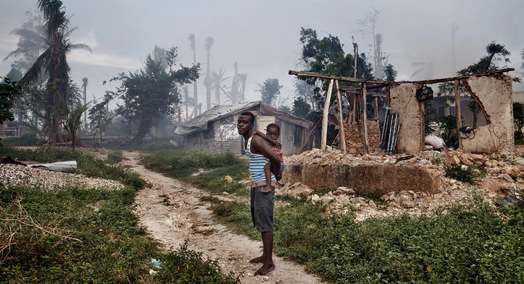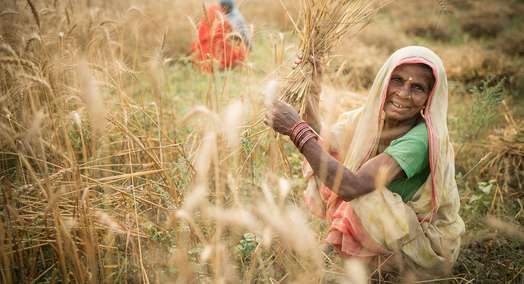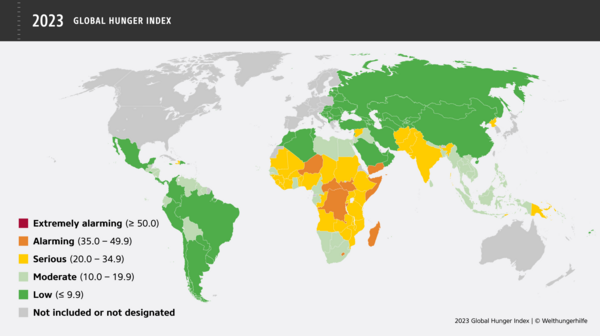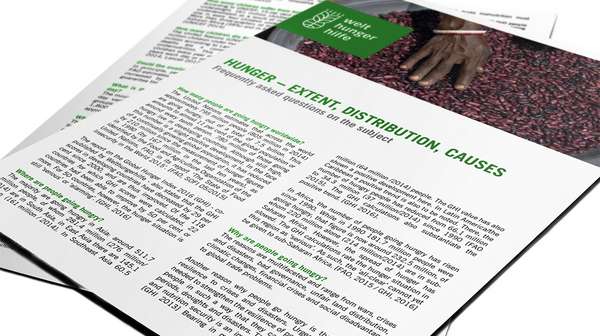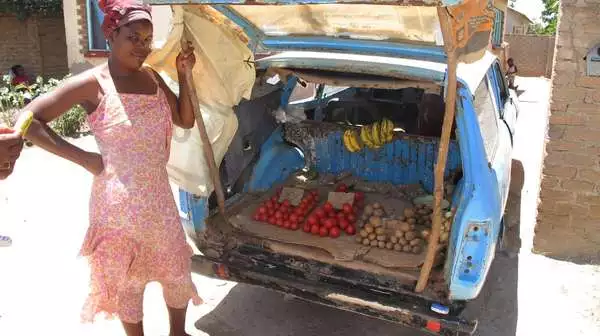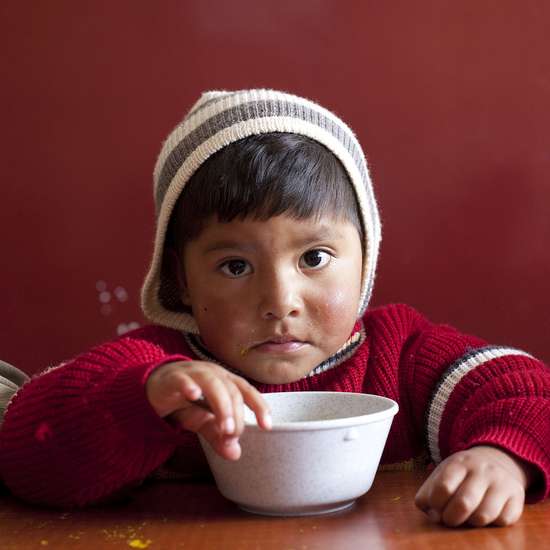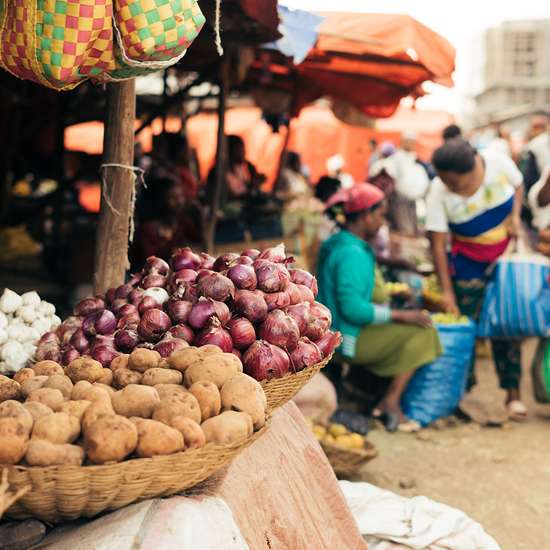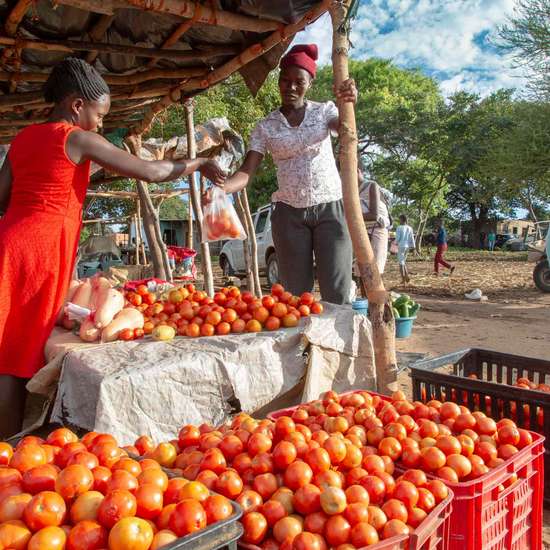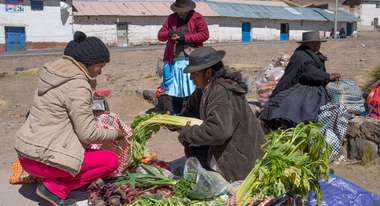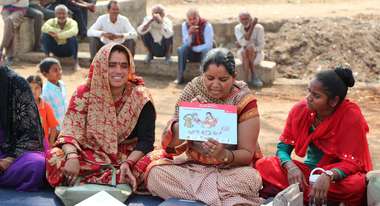Agricultural economist Joachim von Braun on solutions for food waste, hunger and malnutrition. Video by Eco India/Deutsche Welle.
Hunger: Facts & Figures
735 million people do not have enough to eat. Learn about the causes and consequences of hunger, where the situation is worst and what should be done to overcome hunger.
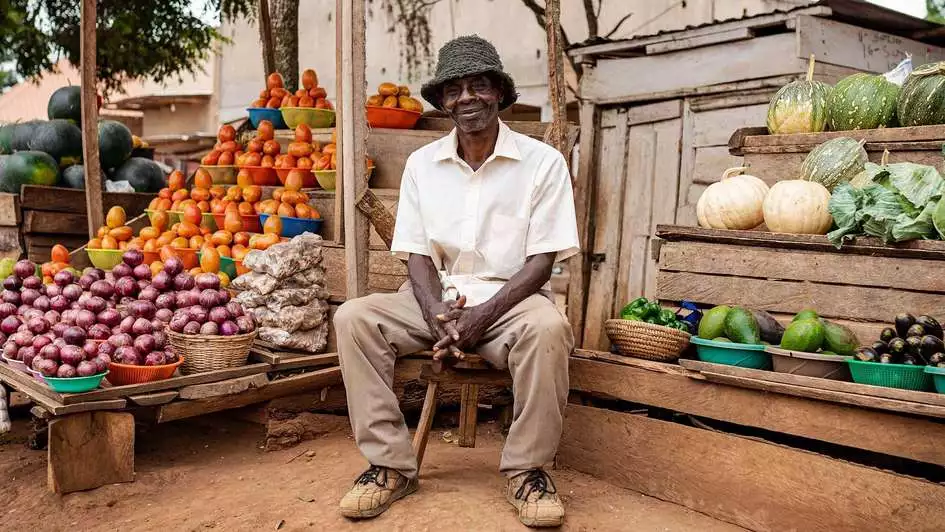
Every thirteen seconds, a child dies from the effects of hunger. 735 million people are going hungry – whilst there is enough food, knowledge and resources for all. And what's more, food is a human right. Since its establishment Welthungerhilfe (WHH) has used various strategies to eradicate global hunger by 2030.
Hunger Definition – What is Hunger?
When specialists talk about hunger, they differentiate between three types: acute, chronic and hidden hunger.
Acute hunger (famine) designates undernourishment over a definable period. It is the most extreme form of hunger and arises frequently in connection with crises like droughts due to El Niño, wars and disasters. It often affects people who are already suffering from chronic hunger. That applies to almost eight percent of all hungry people.
Chronic hunger designates a state of long-term undernourishment. The body absorbs less food than it needs. Although the media mostly report on acute hunger crises, globally, chronic hunger is by far the most widespread. It usually arises in connection with poverty. Chronically hungry people do not have sufficient money for healthy nutrition, clean water or health care.
Hidden hunger is a form of chronic hunger. Due to an unbalanced diet, important nutrients are lacking, such as iron, iodine, zinc or vitamin A. At first glance, the consequences are not necessarily very visible, but over the long-term these nutrient deficiencies lead to serious diseases. In particular, children are unable to develop correctly, neither mentally nor physically. The risk of death is high. Hidden hunger not only harms individuals, but can inhibit the overall development of an affected region, as the efficiency and health of people decreases.
Hunger Worldwide
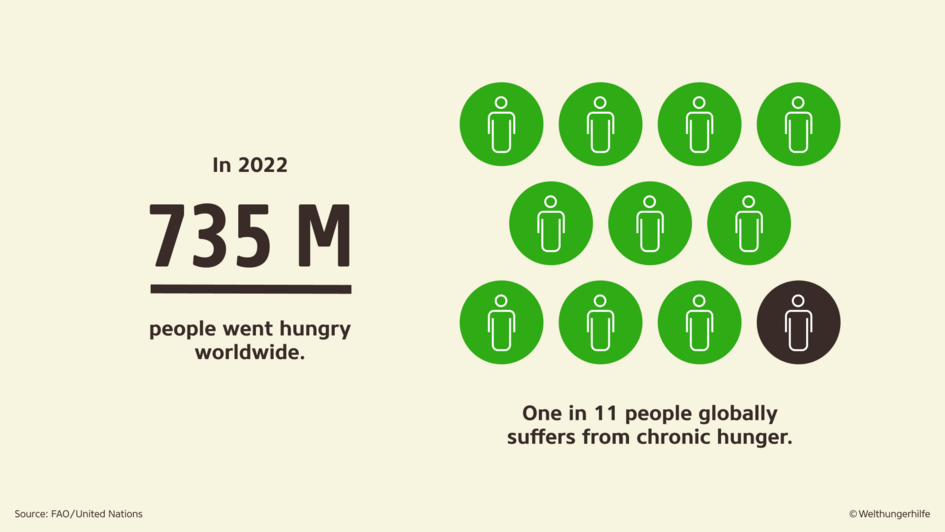
The Global Hunger Index (GHI) shows long-term progress in reducing hunger in the world.
Who is Going Hungry?
The situation is particularly bad in the countryside, three-quarters of all hungry people live there. Almost all of them produce food themselves. As smallholders, however, they and their families only cultivate small fields, on average just 1.6 hectares, which is the equivalent of about two football pitches. Pastoralists have less and less pastureland available. Indigenous population groups, which traditionally have a diet of forest fruits and other wild plants, are increasingly being driven from their land. Landless people, who have to work for low wages as day labourers, are also seriously threatened by hunger.
Hunger Affects the Weakest
Within these groups, children are particularly badly affected. In traditional societies they suffer heavily from the consequences of structural inequalities. Women have little access to education or opportunities to earn a livelihood. Most do not have their own resources, such as land or capital. At the same time, they frequently struggle with the double burden of farm work and raising children. As a result, many children do not receive enough care or food. A lack of knowledge about nutrition and hygiene issues increases this risk.
Since its establishment, WHH has worked supporting disadvantaged smallholders and the landless for sustainable and resilient agriculture.
A summary of frequently asked questions about hunger.
Where does Hunger Exist?
The Global Hunger Index (GHI) provides as precise as possible a picture of global nutrition and hunger. It measures the nutritional state of the population on the basis of four indicators. It has been published by WHH for more than ten years together with international partners.
According to the 2023 GHI scores and provisional designations, nine countries have alarming levels of hunger: Burundi, Central African Republic, Democratic Republic of the Congo, Lesotho, Madagascar, Niger, Somalia, South Sudan, and Yemen. Many countries have seen hunger worsen in recent years: since 2015, hunger has increased in 18 countries with moderate, serious, or alarming 2023 GHI scores.
Hunger is Strongest in Rural Areas
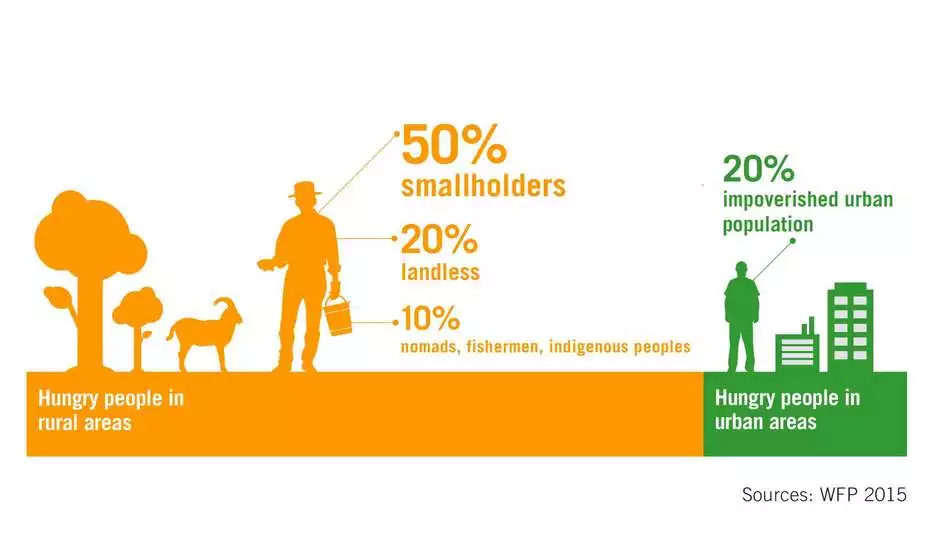
Why does Hunger Exist?
Hunger and malnutrition have many causes. The Agenda 2030 points the way to a fair world. WHH is concentrating on its core theme of food and nutrition security.
Natural disasters: Weather extremes have always led to hunger crises. Droughts and floods destroy harvests. With climate change, extreme weather events are increasing. Droughts over many consecutive years weaken the resilience of the population. They are forced to use up their seed supplies or slaughter cattle.
Poverty: Hunger is, above all, a consequence of poverty. Someone who is poor has insufficient money for food but also cannot provide for their own health and cannot invest in education for children. Women are usually particularly disadvantaged. Only sustainable and resilient agriculture can combat poverty and hunger.
Wars and conflicts: Armed conflicts cause to farmers flee, leaving them unable to cultivate their fields. Frequently they lose all of their possessions. Roads and agricultural infrastructure such as irrigation facilities are destroyed. Due to the limited security, trade also suffers; food becomes scarce and expensive.
Inequality: The Agenda 2030 calls on us to leave no-one behind. Nevertheless, the inequality between rich and poor is increasing, both globally and within individual countries. One percent of the global population possesses nearly half of the global fortune. The ‘lower billion’ of the poor and hungry have almost no chance to free themselves from their hardship. The recently introduced Food Security Standard (FSS) should manage food and nutrition security with greater justice worldwide.
Biased global trade: The rich states determine the rules of international policy. Unfair trade agreements and subsidies create market access and price advantages for enterprises from the industrial nations. Developing countries primarily export raw materials, the profits are skimmed off by rich states. Fairer agricultural trade promotes smallholders and rural value chains. WHH gives a voice to the disadvantaged main producers of food.
Poor governance: The governments in developing countries mostly do not align their policies to the needs of the poorest population. There is a lack of strategies to promote agriculture in their own country in such a way that no-one goes hungry. Corruption is one of the greatest obstacles to development, land grabbing is a big problem.
Waste of resources and climate change: If everyone in the world lived as the rich countries do, resources such as water and land would soon be exhausted. The consequences are borne by others: Expansion of deserts, soil erosion, water scarcity and extreme weather phenomena as a result of climate change are becoming particularly apparent in countries that already suffer from hunger and poverty.
Hunger is Avoidable
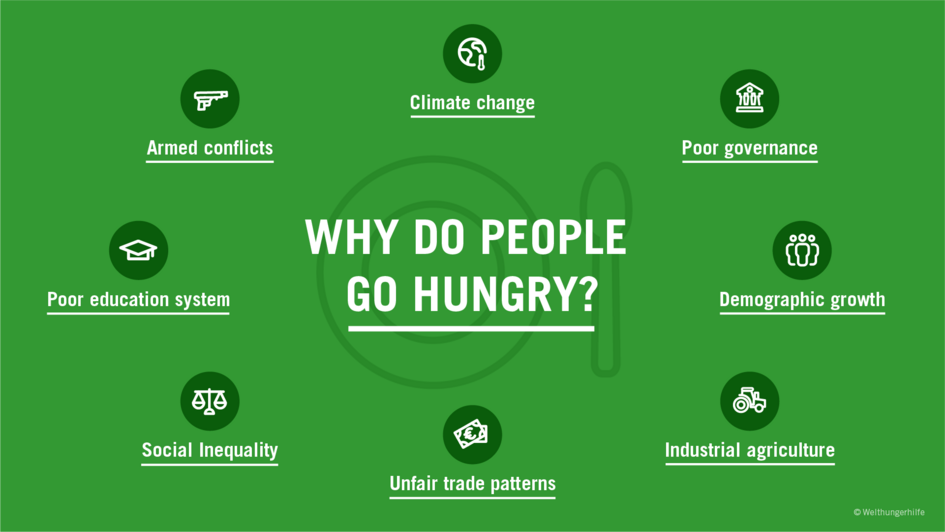
What are the Consequences of Hunger?
Hunger and Poverty Create a Vicious Circle
Undernourishment is not only a consequence of poverty, it also causes poverty, by being passed on from generation to generation – a vicious circle. If mothers-to-be are already undernourished, their children cannot develop correctly during the pregnancy and are frequently born prematurely and/or underweight.
If a child already suffers from malnutrition in the womb, it has little chance of catching up on its underdevelopment. It often has a weakened immune system and is thus more susceptible to infectious diseases. The physical and mental development of the child is restricted, it has more difficulty concentrating and produces poorer school results. In addition, a malnourished child is also more prone to developing chronic diseases in adulthood. Both tend to lead to reduced physical and mental capacity in adulthood. And so earning opportunities decrease and the risk of poverty increases – the cycle continues.
